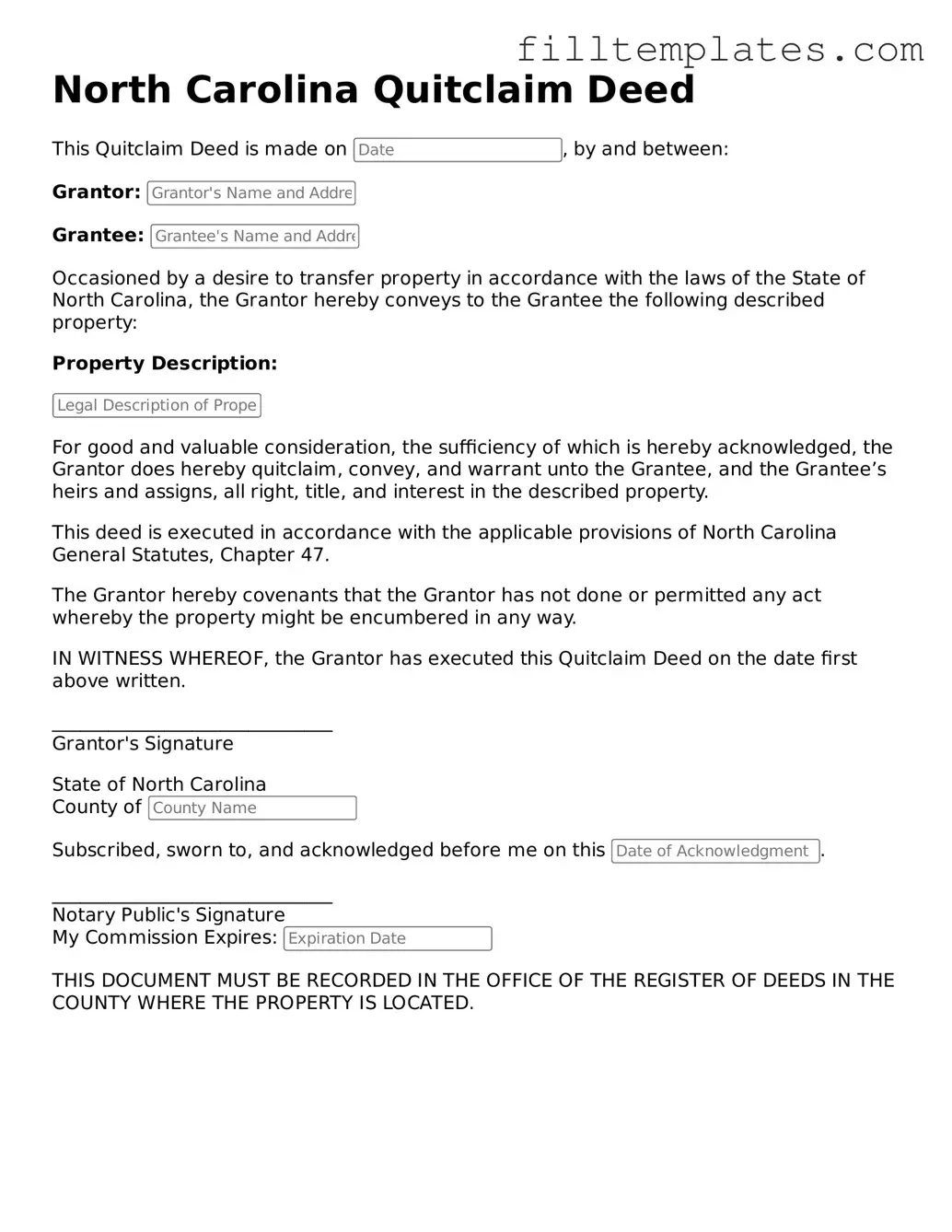Official Quitclaim Deed Template for the State of North Carolina
A Quitclaim Deed is a legal document used to transfer ownership of real estate from one party to another without making any guarantees about the property's title. In North Carolina, this form serves as a straightforward method for property owners to convey their interest in a property, often used in situations such as divorces or family transfers. Understanding the implications and process of using a Quitclaim Deed is essential for anyone involved in real estate transactions in the state.
Open Quitclaim Deed Editor
